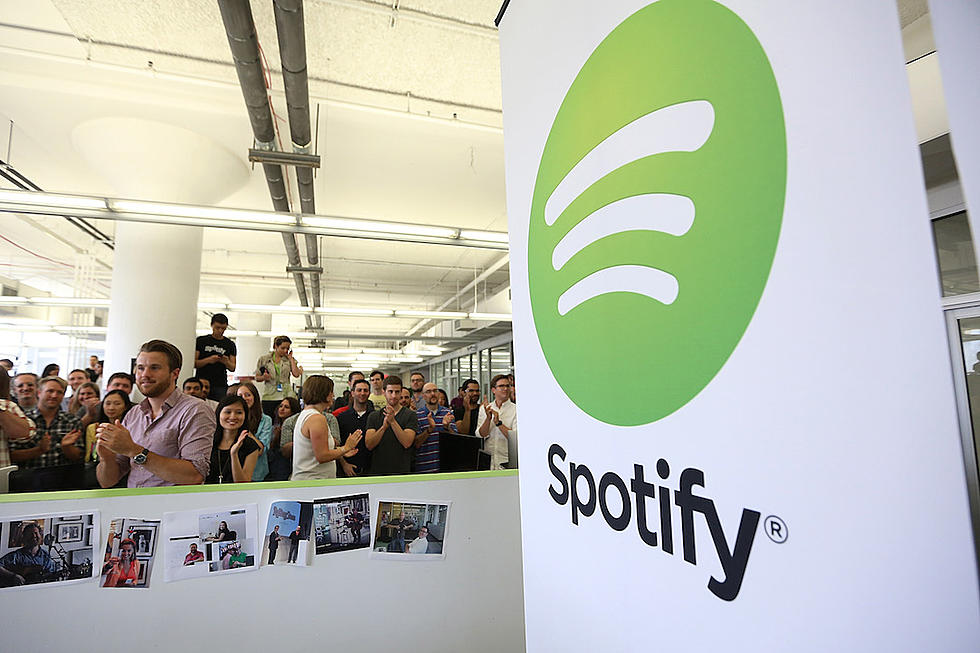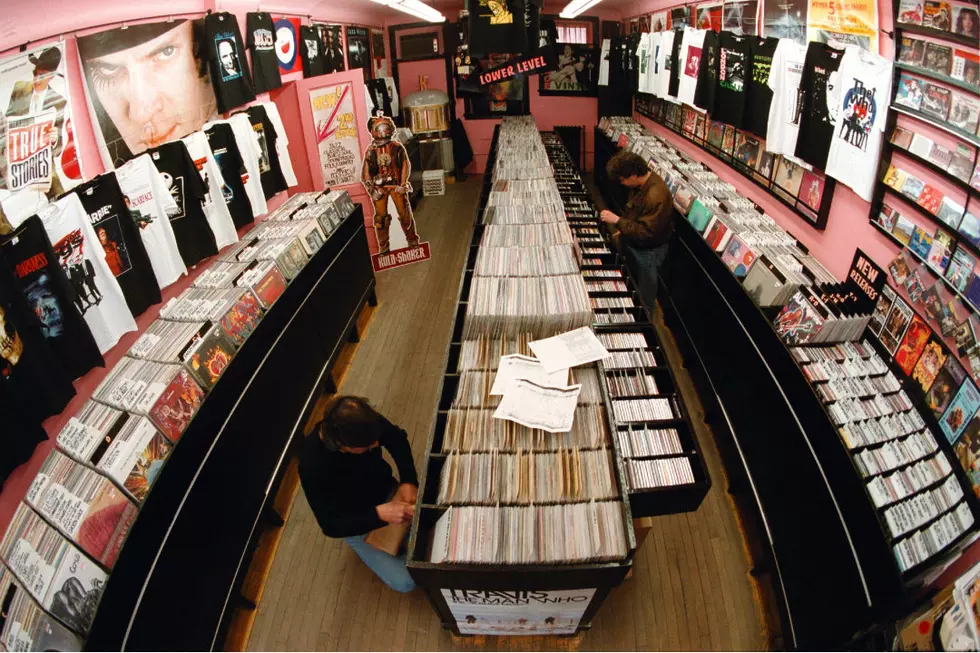
The Music Industry’s Biggest Problem Is You
The death rattle of the record business has gone on long enough at this point that pundits have been able to parse just about every click, pop and gurgle, and point out a multitude of culprits along the way; at various points, everything from Napster to lossy fidelity have been heaped on the pile of the industry's largely self-imposed woes, and although these days we tend to hear fewer execs and analysts screaming about how the sky is falling, things aren't necessarily getting better.
As pointed out by a recent report conducted by Midia Research, global music sales slipped another 2.9 percent in 2014 — and while we're talking about a drop from $6.9 to $6.7 billion, spread between multinational conglomerates in the U.S., U.K., France, Italy, Australian, Sweden and Norway, that's still a fairly significant decline. Bad numbers for the music industry are nothing new, but what's interesting about the way Midia parsed its data is the chief culprit they identified: people who spend more on music than the average consumer.
At first blush, this might sound like nonsense, but as Christopher Cross told us in "Arthur's Theme," "I know it's crazy / But it's true." You see, this group (dubbed Music Aficionados in Midia's report) accounts for more than 60 percent of spending — and they're overwhelmingly spending less than they used to. According to the report, 14 percent said they'd stopped purchasing CDs, 23 percent said they were paying for fewer downloads, and 23 percent also reported buying fewer albums in any format at all.
Labels have increased listener "engagement" while losing control of monetization.
Again, it's easy to interpret this data in different ways. To those who've been conditioned to believe we're raising a generation of listeners who don't feel the need to pay for music, it might look like further proof that the industry has unwittingly contributed to an irreversible uncoupling of the buying impulse — but what's really happening here, as Midia identifies in a separate report, is that labels have increased listener "engagement" while losing control of monetization.
Put another way, those Music Aficionados aren't spending the way they used to because they don't have to — and they don't have to because the music has changed from a garden of mysterious delights to a single-fee, all-you-can-eat buffet.
This is an issue I tackled in a separate column, which looked at the debut of Tidal's hi-fi streaming service and argued that in order for labels (and more importantly, artists) to survive in the streaming economy, listeners needed to be guided back into the notion that not all listening experiences are created equal. Even if you have the means and the inclination to pay for music, you can get just about everything you want (and more than everything you need) for $9.99 a month, including most new releases. Is it any wonder people have stopped buying CDs or paying for downloads when there's no appreciable difference between owning an MP3 and playing a stream?
This is a huge deal because, as Midia notes, those Music Aficionados helped shore up spending when the industry cratered during the Napster era. They used file-sharing services for discovery and rewarded the artists that warranted investment. It was still a far cry from the industry's glory days, but it hinted at a tenable truce between art and technology — and most importantly for the purposes of our discussion here, it retained some semblance of the traditional division between hearing and owning music.
Under the old model, ownership was the goal for serious music fans — partly because, as industry analyst/consultant George Howard pointed out in our recent look at the vinyl resurgence, the product served a dual purpose as a "social object," or a reflection of one's personality. If music meant something to you, it helped tell your story to others — when someone new came over and saw your collection, or when you gave them a mixtape, you were offering up a statement about who you were, and one that often transcended simple conversation. Like the listeners that curated them, those piles of records, tapes and CDs contained truth, lies, secrets and regret.
And what made the whole thing work was that we assembled them because we didn't have a choice — if you wanted the music, you either had to buy it or settle for whatever you could borrow from friends, check out of the library, or tape off the radio. And if you really needed music — if you saw it as that garden of mysterious delights — then those purchases were basically compulsory. There was a hidden world of sound out there, and each album held untold risks and rewards; getting your hands on your own copy and sitting down to unwrap it was often just as thrilling as hitting "play" for the first time.
These days, buying music is most definitely a choice, and one that doesn't often make a ton of sense.
These days, buying music is most definitely a choice, and one that doesn't often make a ton of sense. Streaming has wiped out the impulse buy, and taken a huge bite out of sales for that wide second tier of artists that fans like but don't love. And what's left for the rest? Some downloads, a few CD purchases, maybe a vinyl pressing. It depends on the artist and their demographic. There are lots of reasons to buy an album these days, but "need" usually isn't one of them.
But that need — or as the consultants like to call it, "engagement" — is still very much alive; it's just being fed by that streaming buffet, whose options are so gluttonous that they can end up distracting us from the artists we do love. To offer a personal example, I recently realized that Andrew Hyra, an artist I've admired since his days as one-half of the duo Billy Pilgrim, had a new record out with a new band, Smokin' Novas. While listening to the Novas' LP, I headed over to Facebook to like the band, only to realize I already had and forgotten about it.
Did I mention that the album in question came out last year? And that this kind of thing happens to me -- and, I assume, to many of you -- increasingly often?
There's no single compelling answer for any of this. Firms like Midia like to point to a future in which the labels "monetize Super Fans with Interactive Artist Subscriptions," and use terms like "curated" and "360 degree" to approximate buzzy next-level thinking, but there's no longer any model that enjoys the simple elegance of "you want it, you buy it."
In the short term, it seems more than likely that those increasingly parsimonious Music Aficionados will continue to curtail their spending, using streaming subscriptions for discovery and sampling, and being choosier and choosier about the songs and albums they deign to buy (as well as occasionally missing out on, or forgetting, word of new releases from favorite artists).
In the long term, no one really knows. As a fellow aficionado, I can only tell you that I still get a lot of joy out of paying for art, and whenever possible, I try and buy it directly from the artist -- on a physical format, if the option's offered. It's a far cry from the days of pedaling to the record store and spending $20 a week or more, but it seems better than the alternatives.
More From Diffuser.fm









